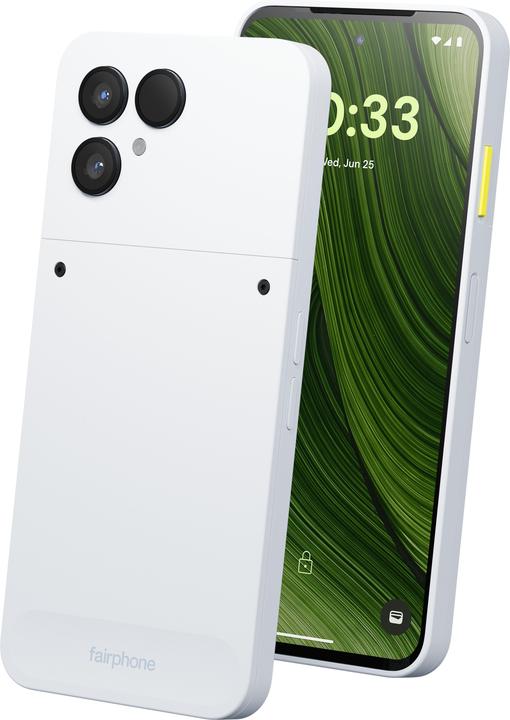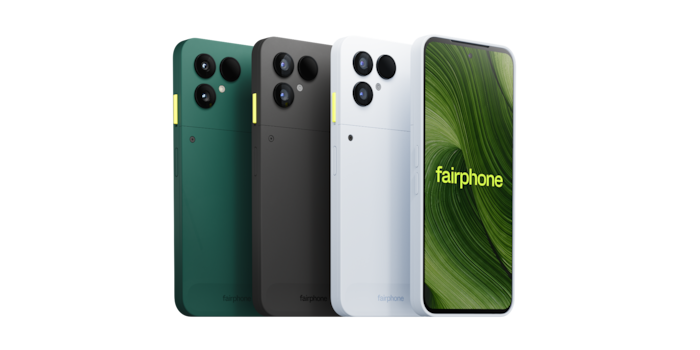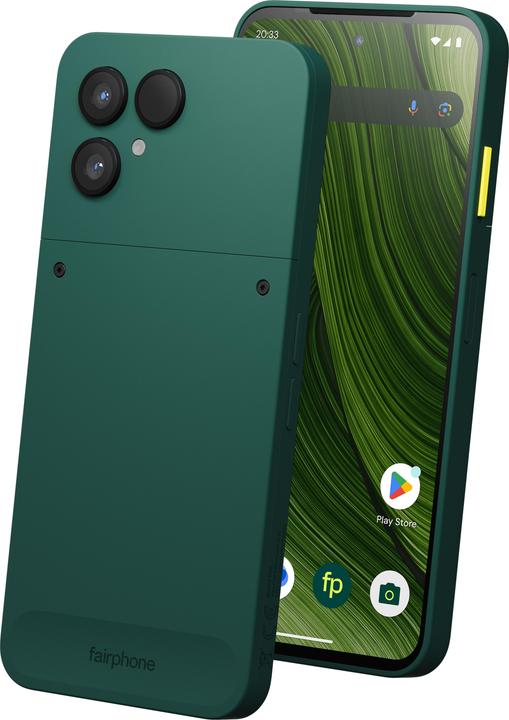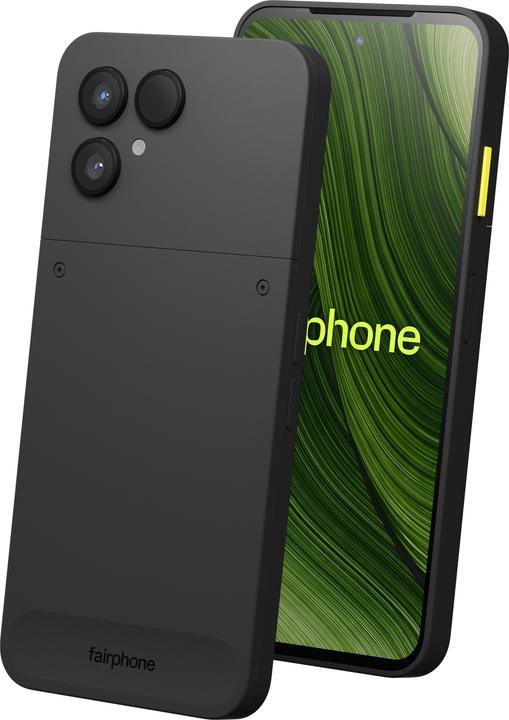

Repairable and robust: the new Fairphone is now available
The sixth-generation Fairphone follows a different concept than many manufacturers: interchangeable modules, transparent supply chains and updates until 2033.
Are you looking for a smartphone that can be repaired instead of replaced? Then you might be interested in our shop novelty, the sixth generation Fairphone. It offers you modular hardware, long-term software support and fairly sourced materials. This makes it an alternative for anyone who values sustainability and longevity without having to sacrifice the latest technology. The smartphone is available in black, white and green.
The first devices will arrive in Switzerland on Thursday. Delivery will take place as soon as possible after receipt of goods.
Modular design
The new Fairphone can be completely dismantled. You can replace ten modules yourself, including the display, cameras, battery, speakers and USB-C port. The back consists of two parts and can be customised with accessories such as card holders or finger holders. The device fulfils the IP55 protection class and is made from recycled and fairly sourced materials. It weighs 195 grams and measures around 156 × 73 × 10 millimetres.
The 6.31-inch P-OLED display has a resolution of 1116 × 2484 pixels (432 ppi). The refresh rate is adaptive between one and 120 hertz. Thanks to LTPO technology, the frame rate automatically adapts to the content. The aspect ratio is 20:9 and the panel is fully laminated and protected by 0.7 millimetre thick Gorilla Glass 7i.
Performance, memory and battery capacity
The smartphone employs a Snapdragon 7s Gen 3 with eight cores (up to 2.5 GHz) and an Adreno 710 GPU. It also has eight gigabytes of LPDDR5 RAM and 256 gigabytes of UFS 3.1 memory. Expansion via microSD card with up to two terabytes is possible.
The battery has a capacity of 4415 mAh. With a 30-watt power supply, you can reach 50 per cent in around 20 minutes. According to the manufacturer, the runtime is up to 47 hours in mixed mode. The battery is replaceable, but cannot be changed during operation.
Camera system
The sixth generation Fairphone has a flexible triple camera system. The main camera offers 50-megapixel resolution, uses the Sony Lytia 700C sensor and has optical image stabilisation. Videos can be recorded in 4K at 30 frames per second. Digital zoom is possible up to ten times.
The ultra-wide-angle camera delivers 13 megapixels and covers a field of view of 120 degrees. A 32-megapixel front camera with autofocus and electronic image stabilisation is available for selfies. All camera modules are individually interchangeable.
Connectivity and other features
The new Fairphone supports 5G, both via a physical nano-SIM and via eSIM. Only one SIM can be active in the 5G network at the same time. Wi-Fi connections run via Wi-Fi 6E with 2.4 GHz, 5 GHz and 6 GHz bands. Bluetooth 5.4 LE is also integrated, as is NFC for contactless payment.
A USB-C port is used for charging and data transfer. The fingerprint sensor is located on the side of the frame. Face recognition is also available. A classic headphone connection has been omitted. Dual loudspeakers ensure stereo playback.
Operating system, updates and materials
The new Fairphone comes with Android 15. Fairphone guarantees at least six Android generations and security updates until 2033.
According to the manufacturer, over 50 per cent of the device is made from recycled or fairly sourced materials. The carbon footprint is around 30 to 35 kilograms of CO₂e (compared to 42 kilograms for the Fairphone 5). It is electronically waste-neutral and uses green electricity in production.
You can find a detailed test of the new Fairphone by my colleague Jan here:
You can find the matching accessories for the Fairphone (Gen.6) here.
My interests are varied, I just like to enjoy life. Always on the lookout for news about darts, gaming, films and series.
Presentations of select new products at Digitec and Galaxus. Tested, to the point, no marketing blah.
Show all


